【导读】golang反射和接口是如何工作?使用反射有什么注意点?本文对go反射做了详细介绍。
反射用法
反射定律
从接口值到反射对象的反射
反射是一种检查存储在接口变量中的(类型,值)对的机制。作为一个开始,我们需要知道reflect包中的两个类型:Type和Value。这两种类型给了我们访问一个接口变量中所包含的内容的途径,另外两个简单的函数reflect.Typeof和reflect.Valueof可以检索一个接口值的reflect.Type和reflect.Value部分。
package main
import (
“fmt”
“reflect”
)
func main() {
var x float64 = 3.4
fmt.Println(“type:”, reflect.TypeOf(x))
}
reflect.Typeof 签名里就包含了一个空接口:
func TypeOf(i interface{}) Type
当我们调用reflect.Typeof(x)的时候,x首先被保存到一个空接口中,这个空接口然后被作为参数传递。reflect.Typeof 会把这个空接口拆包(unpack)恢复出类型信息。
当然,reflect.Valueof可以把值恢复出来
var x float64 = 3.4
fmt.Println(“value:”, reflect.ValueOf(x))//Valueof方法会返回一个Value类型的对象
reflect.Type和reflect.Value这两种类型都提供了大量的方法让我们可以检查和操作这两种类型。一个重要的例子是:
Value类型有一个 Type 方法可以返回reflect.Value类型的Type(这个方法返回的是值的静态类型即static type,也就是说如果定义了type MyInt int64,那么这个函数返回的是MyInt类型而不是int64
Type 和 Value 都有一个Kind方法可以返回一个常量用于指示一个项到底是以什么形式(也就是底层类型即underlying type,继续前面括号里提到的,Kind返回的是int64而不是MyInt)存储的,这些常量包括:Unit, Float64, Slice等等。而且,有关Value类型的带有名字诸如Int和Float的方法可让让我们获取存在里面的值(比如int64和float64):
var x float64 = 3.4
v := reflect.ValueOf(x)
fmt.Println(“type:”, v.Type())
fmt.Println(“kind is float64:”, v.Kind() == reflect.Float64)
fmt.Println(“value:”, v.Float())
type: float64
kind is float64: true
value: 3.4
反射库里有俩性质值得单独拿出来说说。第一个性质是,为了保持API简单,Value的”setter”和“getter”类型的方法操作的是可以包含某个值的最大类型:比如,所有的有符号整型,只有针对int64类型的方法,因为它是所有的有符号整型中最大的一个类型。也就是说,Value的Int方法返回的是一个int64,同时SetInt的参数类型采用的是一个int64;所以,必要时要转换成实际类型:
var x uint8 = ‘x’
v := reflect.ValueOf(x)
fmt.Println(“type:”, v.Type()) // uint8.
fmt.Println(“kind is uint8: ”, v.Kind() == reflect.Uint8) // true.
x = uint8(v.Uint())// v.Uint returns a uint64.看到啦嘛?这个地方必须进行强制类型转换!
第二个性质是,反射对象(reflection object)的Kind描述的是底层类型(underlying type)
从反射队形到接口值的反射
就像物理学上的反射,Go中到反射可以生成它的逆。
给定一个reflect.Value,我们能用Interface方法把它恢复成一个接口值;效果上就是这个Interface方法把类型和值的信息打包成一个接口表示并且返回结果:
func (v Value) Interface() interface{}
y := v.Interface()。(float64) // y will have type float64.
fmt.Println(y)
我们甚至可以做得更好一些,fmt.Println等方法的参数是一个空接口类型的值,所以我们可以让fmt包自己在内部完成我们在上面代码中做的工作。因此,为了正确打印一个reflect.Value,我们只需把Interface方法的返回值直接传递给这个格式化输出例程:
fmt.Println(v.Interface())
fmt.Printf(“value is %7.1e
”, v.Interface())
3.4e+00
还有就是,我们不需要对v.Interface方法的结果调用类型断言(type-assert)为float64;空接口类型值内部包含有具体值的类型信息,并且Printf方法会把它恢复出来。
简要的说,Interface方法是Valueof函数的逆,除了它的返回值的类型总是interface{}静态类型。
为了修改一个反射对象,值必须是settable的
下面是一些不能正常运行的代码,但是很值得研究:
var x float64 = 3.4
v := reflect.ValueOf(x)
v.SetFloat(7.1) // Error: will panic.
问题不是出在值7.1不是可以寻址的,而是出在v不是settable的。Settability是Value的一条性质,而且,不是所有的Value都具备这条性质。
Value的CanSet方法用与测试一个Value的settablity;在我们的例子中,
var x float64 = 3.4
v := reflect.ValueOf(x)
fmt.Println(“settability of v:”, v.CanSet())
settability of v: false
如果对一个non-settable的Value调用Set方法会出现错误。但是,settability到底是什么呢?
settability有点像addressability,但是更加严格。
settability是一个性质,描述的是一个反射对象能够修改创造它的那个实际存储的值的能力。settability由反射对象是否保存原始项(original item)而决定。
var x float64 = 3.4
v := reflect.ValueOf(x)
我们传递了x的一个副本给reflect.Valueof函数,所以作为reflect.Valueof参数被创造出来的接口值只是x的一个副本,而不是x本身。
因为,如果下面这条语句
v.SetFloat(7.1)
执行成功(当然不可能执行成功啦,假设而已),它不会更新x,即使v看起来像是从x创造而来,所以它更新的只是存储在反射值内部的x的一个副本,而x本身不受丝毫影响,所以如果真这样的话,将会非常那令人困惑,而且一点用都没有!所以,这么干是非法的,而settability就是用来阻止这种哦给你非法状况出现的。
如果我们想通过反射来修改x,我们必须把我们想要修改的值的指针传给一个反射库。
首先,我们像平常一样初始化x,然后创造一个指向它的反射值,叫做p.
var x float64 = 3.4
p := reflect.ValueOf(&x) // Note: take the address of x.注意这里哦!我们把x地址传进去了!
fmt.Println(“type of p:”, p.Type())
fmt.Println(“settability of p:”, p.CanSet())
type of p: *float64
settability of p: false
反射对象p不是settable的,但是我们想要设置的不是p,而是(效果上来说)*p。为了得到p指向的东西,我们调用Value的Elem方法,这样就能迂回绕过指针,同时把结果保存在叫v的Value中:
v := p.Elem()
fmt.Println(“settability of v:”, v.CanSet())
settability of v: true
现在v就是一个settable的反射对象了,并且因为v表示x,我们最终能够通过v.SetFloat方法来修改x的值:
v.SetFloat(7.1)
fmt.Println(v.Interface())
fmt.Println(x)
输出正是我们所期待的,反射理解起来有点困难,但是它确实正在做编程语言要做的,尽管是通过掩盖了所发生的一切的反射Types和Vlues来实现的。这样好了,你就直接记住反射Values为了修改它们所表示的东西必须要有这些东西的地址。
type 的方法集
来源 :Golang学习 - reflect 包https://www.cnblogs.com/golove/p/5909541.html
type Type interface {
// Methods applicable to all types.
// 获取 t 类型的值在分配内存时的字节对齐值。
Align() int
// 获取 t 类型的值作为结构体字段时的字节对齐值。
FieldAlign() int
// 根据索引获取 t 类型的方法,如果方法不存在,则 panic。
// 如果 t 是一个实际的类型,则返回值的 Type 和 Func 字段会列出接收者。
// 如果 t 只是一个接口,则返回值的 Type 不列出接收者,Func 为空值。
Method(int) Method
// 根据名称获取 t 类型的方法。
MethodByName(string) (Method, bool)
// 获取 t 类型的方法数量。
NumMethod() int
// 获取 t 类型在其包中定义的名称,未命名类型则返回空字符串。
Name() string
// 获取 t 类型所在包的名称,未命名类型则返回空字符串。
PkgPath() string
// 获取 t 类型的值在分配内存时的大小,功能和 unsafe.SizeOf 一样。
Size() uintptr
// 获取 t 类型的字符串描述,不要通过 String 来判断两种类型是否一致。
String() string
// 获取 t 类型的类别。
Kind() Kind
// 判断 t 类型是否实现了 u 接口。
Implements(u Type) bool
// 判断 t 类型的值可否赋值给 u 类型。
AssignableTo(u Type) bool
// 判断 t 类型的值可否转换为 u 类型。
ConvertibleTo(u Type) bool
// 判断 t 类型的值可否进行比较操作
Comparable() bool
// Methods applicable only to some types, depending on Kind.
// 特定类型的函数:
//
// Int*, Uint*, Float*, Complex*: Bits
// Array: Elem, Len
// Chan: ChanDir, Elem
// Func: In, NumIn, Out, NumOut, IsVariadic.
// Map: Key, Elem
// Ptr: Elem
// Slice: Elem
// Struct: Field, FieldByIndex, FieldByName, FieldByNameFunc, NumField
// 获取数值类型的位宽,t 必须是整型、浮点型、复数型
Bits() int
// 获取通道的方向
ChanDir() ChanDir
// For concreteness, if t represents func(x int, y 。。. float64), then
//
// t.NumIn() == 2
// t.In(0) is the reflect.Type for “int”
// t.In(1) is the reflect.Type for “[]float64”
// t.IsVariadic() == true
// 判断函数是否具有可变参数。
// 如果有可变参数,则 t.In(t.NumIn()-1) 将返回一个切片。
IsVariadic() bool
// 数组、切片、映射、通道、指针、接口
// 获取元素类型、获取指针所指对象类型,获取接口的动态类型
Elem() Type
// 根据索引获取字段
Field(i int) StructField
// 根据索引链获取嵌套字段
FieldByIndex(index []int) StructField
// 根据名称获取字段
FieldByName(name string) (StructField, bool)
// 根据指定的匹配函数 math 获取字段
FieldByNameFunc(match func(string) bool) (StructField, bool)
// 根据索引获取函数的参数信息
In(i int) Type
// Key returns a map type‘s key type.
// It panics if the type’s Kind is not Map.
Key() Type
// Len returns an array type‘s length.
// It panics if the type’s Kind is not Array.
Len() int
// 获取字段数量
NumField() int
// 获取函数的参数数量
NumIn() int
// 获取函数的返回值数量
NumOut() int
// 根据索引获取函数的返回值信息
Out(i int) Type
common() *rtype
uncommon() *uncommonType
}
value 方法集
// 特殊// 判断 v 值是否可寻址// 1、指针的 Elem() 可寻址// 2、切片的元素可寻址// 3、可寻址数组的元素可寻址// 4、可寻址结构体的字段可寻址,方法不可寻址// 也就是说,如果 v 值是指向数组的指针“&数组”,通过 v.Elem() 获取该指针指向的数组,那么// 该数组就是可寻址的,同时该数组的元素也是可寻址的,如果 v 就是一个普通数组,不是通过解引// 用得到的数组,那么该数组就不可寻址,其元素也不可寻址。结构体亦然。func (v Value) CanAddr() bool// 获取 v 值的地址,相当于 & 取地址操作。v 值必须可寻址。func (v Value) Addr() reflect.Value// 判断 v 值是否可以被修改。只有可寻址的 v 值可被修改。// 结构体中的非导出字段(通过 Field() 等方法获取的)不能修改,所有方法不能修改。func (v Value) CanSet() bool// 判断 v 值是否可以转换为接口类型// 结构体中的非导出字段(通过 Field() 等方法获取的)不能转换为接口类型func (v Value) CanInterface() bool// 将 v 值转换为空接口类型。v 值必须可转换为接口类型。func (v Value) Interface() interface{}
// 使用一对 uintptr 返回接口的数据func (v Value) InterfaceData() [2]uintptr// 指针// 将 v 值转换为 uintptr 类型,v 值必须是切片、映射、通道、函数、指针、自由指针。func (v Value) Pointer() uintptr// 获取 v 值的地址。v 值必须是可寻址类型(CanAddr)。func (v Value) UnsafeAddr() uintptr// 将 UnsafePointer 类别的 v 值修改为 x,v 值必须是 UnsafePointer 类别,必须可修改。func (v Value) SetPointer(x unsafe.Pointer)// 判断 v 值是否为 nil,v 值必须是切片、映射、通道、函数、接口、指针。// IsNil 并不总等价于 Go 的潜在比较规则,比如对于 var i interface{},i == nil 将返回// true,但是 reflect.ValueOf(i).IsNil() 将 panic。func (v Value) IsNil() bool// 获取“指针所指的对象”或“接口所包含的对象”func (v Value) Elem() reflect.Value// 通用// 获取 v 值的字符串描述func (v Value) String() string// 获取 v 值的类型func (v Value) Type() reflect.Type// 返回 v 值的类别,如果 v 是空值,则返回 reflect.Invalid。func (v Value) Kind() reflect.Kind// 获取 v 的方法数量func (v Value) NumMethod() int// 根据索引获取 v 值的方法,方法必须存在,否则 panic// 使用 Call 调用方法的时候不用传入接收者,Go 会自动把 v 作为接收者传入。func (v Value) Method(int) reflect.Value// 根据名称获取 v 值的方法,如果该方法不存在,则返回空值(reflect.Invalid)。func (v Value) MethodByName(string) reflect.Value// 判断 v 本身(不是 v 值)是否为零值。// 如果 v 本身是零值,则除了 String 之外的其它所有方法都会 panic。func (v Value) IsValid() bool// 将 v 值转换为 t 类型,v 值必须可转换为 t 类型,否则 panic。func (v Value) Convert(t Type) reflect.Value// 获取// 获取 v 值的内容,如果 v 值不是有符号整型,则 panic。func (v Value) Int() int64// 获取 v 值的内容,如果 v 值不是无符号整型(包括 uintptr),则 panic。func (v Value) Uint() uint64// 获取 v 值的内容,如果 v 值不是浮点型,则 panic。func (v Value) Float() float64// 获取 v 值的内容,如果 v 值不是复数型,则 panic。func (v Value) Complex() complex128// 获取 v 值的内容,如果 v 值不是布尔型,则 panic。func (v Value) Bool() bool// 获取 v 值的长度,v 值必须是字符串、数组、切片、映射、通道。func (v Value) Len() int// 获取 v 值的容量,v 值必须是数值、切片、通道。func (v Value) Cap() int// 获取 v 值的第 i 个元素,v 值必须是字符串、数组、切片,i 不能超出范围。func (v Value) Index(i int) reflect.Value// 获取 v 值的内容,如果 v 值不是字节切片,则 panic。func (v Value) Bytes() []byte// 获取 v 值的切片,切片长度 = j - i,切片容量 = v.Cap() - i。// v 必须是字符串、数值、切片,如果是数组则必须可寻址。i 不能超出范围。func (v Value) Slice(i, j int) reflect.Value// 获取 v 值的切片,切片长度 = j - i,切片容量 = k - i。// i、j、k 不能超出 v 的容量。i 《= j 《= k。// v 必须是字符串、数值、切片,如果是数组则必须可寻址。i 不能超出范围。func (v Value) Slice3(i, j, k int) reflect.Value// 根据 key 键获取 v 值的内容,v 值必须是映射。// 如果指定的元素不存在,或 v 值是未初始化的映射,则返回零值(reflect.ValueOf(nil))func (v Value) MapIndex(key Value) reflect.Value// 获取 v 值的所有键的无序列表,v 值必须是映射。// 如果 v 值是未初始化的映射,则返回空列表。func (v Value) MapKeys() []reflect.Value// 判断 x 是否超出 v 值的取值范围,v 值必须是有符号整型。func (v Value) OverflowInt(x int64) bool// 判断 x 是否超出 v 值的取值范围,v 值必须是无符号整型。func (v Value) OverflowUint(x uint64) bool// 判断 x 是否超出 v 值的取值范围,v 值必须是浮点型。func (v Value) OverflowFloat(x float64) bool// 判断 x 是否超出 v 值的取值范围,v 值必须是复数型。func (v Value) OverflowComplex(x complex128) bool
------------------------------
// 设置(这些方法要求 v 值必须可修改)// 设置 v 值的内容,v 值必须是有符号整型。func (v Value) SetInt(x int64)// 设置 v 值的内容,v 值必须是无符号整型。func (v Value) SetUint(x uint64)// 设置 v 值的内容,v 值必须是浮点型。func (v Value) SetFloat(x float64)// 设置 v 值的内容,v 值必须是复数型。func (v Value) SetComplex(x complex128)// 设置 v 值的内容,v 值必须是布尔型。func (v Value) SetBool(x bool)// 设置 v 值的内容,v 值必须是字符串。func (v Value) SetString(x string)// 设置 v 值的长度,v 值必须是切片,n 不能超出范围,不能为负数。func (v Value) SetLen(n int)// 设置 v 值的内容,v 值必须是切片,n 不能超出范围,不能小于 Len。func (v Value) SetCap(n int)// 设置 v 值的内容,v 值必须是字节切片。x 可以超出 v 值容量。func (v Value) SetBytes(x []byte)// 设置 v 值的键和值,如果键存在,则修改其值,如果键不存在,则添加键和值。// 如果将 val 设置为零值(reflect.ValueOf(nil)),则删除该键。// 如果 v 值是一个未初始化的 map,则 panic。func (v Value) SetMapIndex(key, val reflect.Value)// 设置 v 值的内容,v 值必须可修改,x 必须可以赋值给 v 值。func (v Value) Set(x reflect.Value)
------------------------------
// 结构体// 获取 v 值的字段数量,v 值必须是结构体。func (v Value) NumField() int// 根据索引获取 v 值的字段,v 值必须是结构体。如果字段不存在则 panic。func (v Value) Field(i int) reflect.Value// 根据索引链获取 v 值的嵌套字段,v 值必须是结构体。func (v Value) FieldByIndex(index []int) reflect.Value// 根据名称获取 v 值的字段,v 值必须是结构体。// 如果指定的字段不存在,则返回零值(reflect.ValueOf(nil))func (v Value) FieldByName(string) reflect.Value// 根据匹配函数 match 获取 v 值的字段,v 值必须是结构体。// 如果没有匹配的字段,则返回零值(reflect.ValueOf(nil))func (v Value) FieldByNameFunc(match func(string) bool) Value// 函数// 通过参数列表 in 调用 v 值所代表的函数(或方法)。函数的返回值存入 r 中返回。// 要传入多少参数就在 in 中存入多少元素。// Call 即可以调用定参函数(参数数量固定),也可以调用变参函数(参数数量可变)。func (v Value) Call(in []Value) (r []Value)// 通过参数列表 in 调用 v 值所代表的函数(或方法)。函数的返回值存入 r 中返回。// 函数指定了多少参数就在 in 中存入多少元素,变参作为一个单独的参数提供。// CallSlice 只能调用变参函数。func (v Value) CallSlice(in []Value) []Value// 通道// 发送数据(会阻塞),v 值必须是可写通道。func (v Value) Send(x reflect.Value)// 接收数据(会阻塞),v 值必须是可读通道。func (v Value) Recv() (x reflect.Value, ok bool)// 尝试发送数据(不会阻塞),v 值必须是可写通道。func (v Value) TrySend(x reflect.Value) bool// 尝试接收数据(不会阻塞),v 值必须是可读通道。func (v Value) TryRecv() (x reflect.Value, ok bool)// 关闭通道,v 值必须是通道。func (v Value) Close()
// 示例var f1 = func(a int, b []int) { fmt.Println(a, b) }
var f2 = func(a int, b 。。.int) { fmt.Println(a, b) }
func main() {
v1 := reflect.ValueOf(f1)
v2 := reflect.ValueOf(f2)
a := reflect.ValueOf(1)
b := reflect.ValueOf([]int{1, 2, 3})
v1.Call([]reflect.Value{a, b})
v2.Call([]reflect.Value{a, a, a, a, a, a})
//v1.CallSlice([]reflect.Value{a, b}) // 非变参函数,不能用 CallSlice。
v2.CallSlice([]reflect.Value{a, b})
}
样例
类型的字段标识
下面是分析一个struct值,t,的简单例子。我们用这个struct的地址创建一个反射对象,因为我们想一会改变它的值。然后我们把typeofT变量设置为这个反射对象的类型,接着使用一些直接的方法调用(细节请见reflect包)来迭代各个域。注意,我们从struct类型中提取了各个域的名字,但是这些域本身都是reflect.Value对象。
type T struct {
A int
B string
}
t := T{23, “skidoo”}
s := reflect.ValueOf(&t).Elem()
typeOfT := s.Type()//把s.Type()返回的Type对象复制给typeofT,typeofT也是一个反射。for i := 0; i 《 s.NumField(); i++ {
f := s.Field(i)//迭代s的各个域,注意每个域仍然是反射。
fmt.Printf(“%d: %s %s = %v
”, i,
typeOfT.Field(i).Name, f.Type(), f.Interface())//提取了每个域的名字
}
0: A int = 231: B string = skidoo
reflect.Type的Field方法将返回一个reflect.StructField,里面含有每个成员的名字、类型和可选的成员标签等信息。
因为s包含了一个settable的反射对象,所以我们可以修改这个structure的各个域。
s.Field(0).SetInt(77)
s.Field(1).SetString(“Sunset Strip”)
fmt.Println(“t is now”, t)
t is now {77 Sunset Strip}
类型的方法集
func Print(x interface{}) {
v := reflect.ValueOf(x)
t := v.Type()
fmt.Printf(“type %s
”, t)
for i := 0; i 《 v.NumMethod(); i++ {
methType := v.Method(i).Type()
fmt.Printf(“func (%s) %s%s
”, t, t.Method(i).Name,
strings.TrimPrefix(methType.String(), “func”))
}
}
reflect.Type和reflect.Value都提供了一个Method方法。每次t.Method(i)调用将一个reflect.Method的实例,对应一个用于描述一个方法的名称和类型的结构体。每次v.Method(i)方法调用都返回一个reflect.Value以表示对应的值(§6.4),也就是一个方法是帮到它的接收者的。使用reflect.Value.Call方法(我们之类没有演示),将可以调用一个Func类型的Value,但是这个例子中只用到了它的类型。
methods.Print(time.Hour)
// Output:// type time.Duration// func (time.Duration) Hours() float64// func (time.Duration) Minutes() float64// func (time.Duration) Nanoseconds() int64// func (time.Duration) Seconds() float64// func (time.Duration) String() string
methods.Print(new(strings.Replacer))
// Output:// type *strings.Replacer// func (*strings.Replacer) Replace(string) string// func (*strings.Replacer) WriteString(io.Writer, string) (int, error)
反射的原理
Typeof
Typeof 函数非常简单,在调用 Typeof 函数的时候,变量就已经被转化为 interface 类型,Typeof 只需要将它的 typ 属性取出来即可。
func TypeOf(i interface{}) Type {
eface := *(*emptyInterface)(unsafe.Pointer(&i))
return toType(eface.typ)
}
func toType(t *rtype) Type {
if t == nil {
return nil
}
return t
}
type.Name 函数
解析类型的名称是一个反射很基础的功能,它和 String 方法的不同在于,它不会包含类型所在包的名字,例如 main.Cat 与 Cat,所以一定不要用 name 来区分类型。
从实现来看,Name 是建立在 String 函数的基础上的,它找到了 。 这个字符然后分割了字符串。
从下面的代码中可以看到,rtype 的 str(nameoff) 属性并不是简单的距离,而是距离各个模块 types 的距离。
func (t *rtype) Name() string {
if t.tflag&tflagNamed == 0 {
return “”
}
s := t.String()
i := len(s) - 1
for i 》= 0 && s[i] != ‘。’ {
i--
}
return s[i+1:]
}
func (t *rtype) String() string {
s := t.nameOff(t.str).name()
if t.tflag&tflagExtraStar != 0 {
return s[1:]
}
return s
}
func (t *rtype) nameOff(off nameOff) name {
return name{(*byte)(resolveNameOff(unsafe.Pointer(t), int32(off)))}
}
// reflect_resolveNameOff resolves a name offset from a base pointer.//go:linkname reflect_resolveNameOff reflect.resolveNameOfffunc reflect_resolveNameOff(ptrInModule unsafe.Pointer, off int32) unsafe.Pointer {
return unsafe.Pointer(resolveNameOff(ptrInModule, nameOff(off)).bytes)
}
func resolveNameOff(ptrInModule unsafe.Pointer, off nameOff) name {
if off == 0 {
return name{}
}
base := uintptr(ptrInModule)
for md := &firstmoduledata; md != nil; md = md.next {
if base 》= md.types && base 《 md.etypes {
res := md.types + uintptr(off)
if res 》 md.etypes {
println(“runtime: nameOff”, hex(off), “out of range”, hex(md.types), “-”, hex(md.etypes))
throw(“runtime: name offset out of range”)
}
return name{(*byte)(unsafe.Pointer(res))}
}
}
// No module found. see if it is a run time name.
reflectOffsLock()
res, found := reflectOffs.m[int32(off)]
reflectOffsUnlock()
if !found {
println(“runtime: nameOff”, hex(off), “base”, hex(base), “not in ranges:”)
for next := &firstmoduledata; next != nil; next = next.next {
println(“ types”, hex(next.types), “etypes”, hex(next.etypes))
}
throw(“runtime: name offset base pointer out of range”)
}
return name{(*byte)(res)}
}
type.Field
func (t *rtype) Field(i int) StructField {
if t.Kind() != Struct {
panic(“reflect: Field of non-struct type”)
}
tt := (*structType)(unsafe.Pointer(t))
return tt.Field(i)
}
func (t *structType) Field(i int) (f StructField) {
if i 《 0 || i 》= len(t.fields) {
panic(“reflect: Field index out of bounds”)
}
p := &t.fields[i]
f.Type = toType(p.typ)
f.Name = p.name.name()
f.Anonymous = p.embedded()
if !p.name.isExported() {
f.PkgPath = t.pkgPath.name()
}
if tag := p.name.tag(); tag != “” {
f.Tag = StructTag(tag)
}
f.Offset = p.offset()
// NOTE(rsc): This is the only allocation in the interface
// presented by a reflect.Type. It would be nice to avoid,
// at least in the common cases, but we need to make sure
// that misbehaving clients of reflect cannot affect other
// uses of reflect. One possibility is CL 5371098, but we
// postponed that ugliness until there is a demonstrated
// need for the performance. This is issue 2320.
f.Index = []int{i}
return
}
type.Method 方法
对于 golang 里面的类型,它们的方法都是存储在 uncommon 的部分当中,而且他们的数据结构是:
type method struct {
name nameOff // name of method
mtyp typeOff // method type (without receiver)
ifn textOff // fn used in interface call (one-word receiver)
tfn textOff // fn used for normal method call
}
数据结构中,mtyp 是 method 类型的地址,ifn 是接口函数的地址,tfn 是普通函数的地址。
它会被 Method 函数转换为 Method 类型:
type Method struct {
// Name is the method name.
// PkgPath is the package path that qualifies a lower case (unexported)
// method name. It is empty for upper case (exported) method names.
// The combination of PkgPath and Name uniquely identifies a method
// in a method set.
// See https://golang.org/ref/spec#Uniqueness_of_identifiers
Name string
PkgPath string
Type Type // method type
Func Value // func with receiver as first argument
Index int // index for Type.Method
}
Method 的 Type 由 mtyp 而来,Func 由 tfn/ifn 而来,而 Func 是 Value 类型,Func.typ 还是 mtyp,ptr 是 tfn/ifn。
func (t *rtype) Method(i int) (m Method) {
if t.Kind() == Interface {
tt := (*interfaceType)(unsafe.Pointer(t))
return tt.Method(i)
}
methods := t.exportedMethods()
if i 《 0 || i 》= len(methods) {
panic(“reflect: Method index out of range”)
}
p := methods[i]
pname := t.nameOff(p.name)
m.Name = pname.name()
fl := flag(Func)
mtyp := t.typeOff(p.mtyp)
ft := (*funcType)(unsafe.Pointer(mtyp))
in := make([]Type, 0, 1+len(ft.in()))
in = append(in, t)
for _, arg := range ft.in() {
in = append(in, arg)
}
out := make([]Type, 0, len(ft.out()))
for _, ret := range ft.out() {
out = append(out, ret)
}
mt := FuncOf(in, out, ft.IsVariadic())
m.Type = mt
tfn := t.textOff(p.tfn)
fn := unsafe.Pointer(&tfn)
m.Func = Value{mt.(*rtype), fn, fl}
m.Index = i
return m
}
func (t *rtype) exportedMethods() []method {
ut := t.uncommon()
if ut == nil {
return nil
}
return ut.exportedMethods()
}
func (t *uncommonType) exportedMethods() []method {
if t.xcount == 0 {
return nil
}
return (*[1 《《 16]method)(add(unsafe.Pointer(t), uintptr(t.moff), “t.xcount 》 0”))[t.xcount]
}
ValueOf
func ValueOf(i interface{}) Value {
if i == nil {
return Value{}
}
// TODO: Maybe allow contents of a Value to live on the stack.
// For now we make the contents always escape to the heap. It
// makes life easier in a few places (see chanrecv/mapassign
// comment below)。
escapes(i)
return unpackEface(i)
}
func unpackEface(i interface{}) Value {
e := (*emptyInterface)(unsafe.Pointer(&i))
// NOTE: don‘t read e.word until we know whether it is really a pointer or not.
t := e.typ
if t == nil {
return Value{}
}
f := flag(t.Kind())
if ifaceIndir(t) {
f |= flagIndir
}
return Value{t, e.word, f}
}
value.Field
通过 value 的 Field 可以获取到结构体的内部属性值,结构体的内部属性都是 structField 类型的,每个 structField.offsetEmbed 是该属性值距离结构体地址的偏移量。
func (v Value) Field(i int) Value {
if v.kind() != Struct {
panic(&ValueError{“reflect.Value.Field”, v.kind()})
}
tt := (*structType)(unsafe.Pointer(v.typ))
if uint(i) 》= uint(len(tt.fields)) {
panic(“reflect: Field index out of range”)
}
field := &tt.fields[i]
typ := field.typ
// Inherit permission bits from v, but clear flagEmbedRO.
fl := v.flag&(flagStickyRO|flagIndir|flagAddr) | flag(typ.Kind())
// Using an unexported field forces flagRO.
if !field.name.isExported() {
if field.embedded() {
fl |= flagEmbedRO
} else {
fl |= flagStickyRO
}
}
// Either flagIndir is set and v.ptr points at struct,
// or flagIndir is not set and v.ptr is the actual struct data.
// In the former case, we want v.ptr + offset.
// In the latter case, we must have field.offset = 0,
// so v.ptr + field.offset is still the correct address.
ptr := add(v.ptr, field.offset(), “same as non-reflect &v.field”)
return Value{typ, ptr, fl}
}
type structField struct {
name name // name is always non-empty
typ *rtype // type of field
offsetEmbed uintptr // byte offset of field《《1 | isEmbedded
}
func (f *structField) offset() uintptr {
return f.offsetEmbed 》》 1
}
value.Method
我们从下面的代码中可以看到,Method 也是返回一个 Value,但是这个 Value 的 ptr 并不是第 i 个函数的地址,而是原封不动的将原 value 的 ptr 返回了,仅仅是对 flag 设置比特位而已。
func (v Value) Method(i int) Value {
if v.typ == nil {
panic(&ValueError{“reflect.Value.Method”, Invalid})
}
if v.flag&flagMethod != 0 || uint(i) 》= uint(v.typ.NumMethod()) {
panic(“reflect: Method index out of range”)
}
if v.typ.Kind() == Interface && v.IsNil() {
panic(“reflect: Method on nil interface value”)
}
fl := v.flag & (flagStickyRO | flagIndir) // Clear flagEmbedRO
fl |= flag(Func)
fl |= flag(i)《《flagMethodShift | flagMethod
return Value{v.typ, v.ptr, fl}
}
value.Call
Call 函数目的是调用 value 的相应的函数,这里和 Method 是相互呼应的,使用了 flag 的 flagMethodShift,得到了相应的函数地址。
func (v Value) Call(in []Value) []Value {
v.mustBe(Func)
v.mustBeExported()
return v.call(“Call”, in)
}
func (v Value) call(op string, in []Value) []Value {
// Get function pointer, type.
t := (*funcType)(unsafe.Pointer(v.typ))
var (
fn unsafe.Pointer
rcvr Value
rcvrtype *rtype
)
if v.flag&flagMethod != 0 {
rcvr = v
rcvrtype, t, fn = methodReceiver(op, v, int(v.flag)》》flagMethodShift)
} else if v.flag&flagIndir != 0 {
fn = *(*unsafe.Pointer)(v.ptr)
} else {
fn = v.ptr
}
if fn == nil {
panic(“reflect.Value.Call: call of nil function”)
}
isSlice := op == “CallSlice”
n := t.NumIn()
if isSlice {
if !t.IsVariadic() {
panic(“reflect: CallSlice of non-variadic function”)
}
if len(in) 《 n {
panic(“reflect: CallSlice with too few input arguments”)
}
if len(in) 》 n {
panic(“reflect: CallSlice with too many input arguments”)
}
} else {
if t.IsVariadic() {
n--
}
if len(in) 《 n {
panic(“reflect: Call with too few input arguments”)
}
if !t.IsVariadic() && len(in) 》 n {
panic(“reflect: Call with too many input arguments”)
}
}
for _, x := range in {
if x.Kind() == Invalid {
panic(“reflect: ” + op + “ using zero Value argument”)
}
}
for i := 0; i 《 n; i++ {
if xt, targ := in[i].Type(), t.In(i); !xt.AssignableTo(targ) {
panic(“reflect: ” + op + “ using ” + xt.String() + “ as type ” + targ.String())
}
}
if !isSlice && t.IsVariadic() {
// prepare slice for remaining values
m := len(in) - n
slice := MakeSlice(t.In(n), m, m)
elem := t.In(n).Elem()
for i := 0; i 《 m; i++ {
x := in[n+i]
if xt := x.Type(); !xt.AssignableTo(elem) {
panic(“reflect: cannot use ” + xt.String() + “ as type ” + elem.String() + “ in ” + op)
}
slice.Index(i).Set(x)
}
origIn := in
in = make([]Value, n+1)
copy(in[:n], origIn)
in[n] = slice
}
nin := len(in)
if nin != t.NumIn() {
panic(“reflect.Value.Call: wrong argument count”)
}
nout := t.NumOut()
// Compute frame type.
frametype, _, retOffset, _, framePool := funcLayout(t, rcvrtype)
// Allocate a chunk of memory for frame.
var args unsafe.Pointer
if nout == 0 {
args = framePool.Get()。(unsafe.Pointer)
} else {
// Can’t use pool if the function has return values.
// We will leak pointer to args in ret, so its lifetime is not scoped.
args = unsafe_New(frametype)
}
off := uintptr(0)
// Copy inputs into args.
if rcvrtype != nil {
storeRcvr(rcvr, args)
off = ptrSize
}
for i, v := range in {
v.mustBeExported()
targ := t.In(i)。(*rtype)
a := uintptr(targ.align)
off = (off + a - 1) &^ (a - 1)
n := targ.size
if n == 0 {
// Not safe to compute args+off pointing at 0 bytes,
// because that might point beyond the end of the frame,
// but we still need to call assignTo to check assignability.
v.assignTo(“reflect.Value.Call”, targ, nil)
continue
}
addr := add(args, off, “n 》 0”)
v = v.assignTo(“reflect.Value.Call”, targ, addr)
if v.flag&flagIndir != 0 {
typedmemmove(targ, addr, v.ptr)
} else {
*(*unsafe.Pointer)(addr) = v.ptr
}
off += n
}
// Call.
call(frametype, fn, args, uint32(frametype.size), uint32(retOffset))
// For testing; see TestCallMethodJump.
if callGC {
runtime.GC()
}
var ret []Value
if nout == 0 {
typedmemclr(frametype, args)
framePool.Put(args)
} else {
// Zero the now unused input area of args,
// because the Values returned by this function contain pointers to the args object,
// and will thus keep the args object alive indefinitely.
typedmemclrpartial(frametype, args, 0, retOffset)
// Wrap Values around return values in args.
ret = make([]Value, nout)
off = retOffset
for i := 0; i 《 nout; i++ {
tv := t.Out(i)
a := uintptr(tv.Align())
off = (off + a - 1) &^ (a - 1)
if tv.Size() != 0 {
fl := flagIndir | flag(tv.Kind())
ret[i] = Value{tv.common(), add(args, off, “tv.Size() != 0”), fl}
// Note: this does introduce false sharing between results -
// if any result is live, they are all live.
// (And the space for the args is live as well, but as we‘ve
// cleared that space it isn’t as big a deal.)
} else {
// For zero-sized return value, args+off may point to the next object.
// In this case, return the zero value instead.
ret[i] = Zero(tv)
}
off += tv.Size()
}
}
return ret
}
转自:LeoYang90
github.com/LeoYang90/Golang-Internal-Notes/blob/master/Go%20interface%20%E5%8F%8D%E5%B0%84.md
编辑:jq
-
编程
+关注
关注
88文章
3642浏览量
94089 -
函数
+关注
关注
3文章
4350浏览量
63051 -
代码
+关注
关注
30文章
4841浏览量
69195
发布评论请先 登录
相关推荐
时域反射计的技术原理和应用场景
光的全反射

反射光束整形系统
如何使用反射内存交换机
CPCI 接口反射内存卡
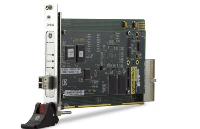
PCIe 接口的反射内存卡
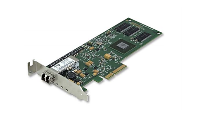
PCI 接口的反射内存卡
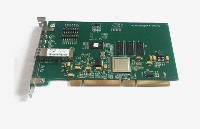




 golang反射和接口是如何工作 使用反射有什么注意点?
golang反射和接口是如何工作 使用反射有什么注意点?
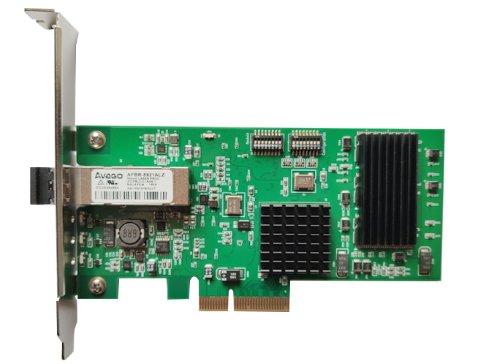
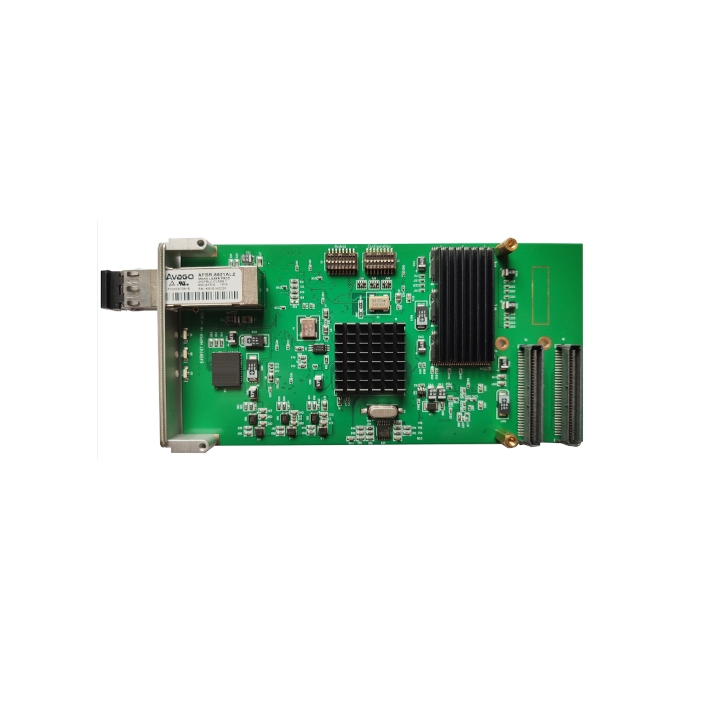
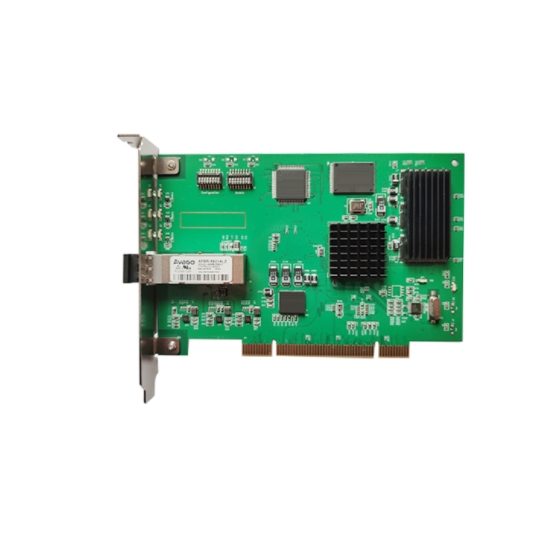
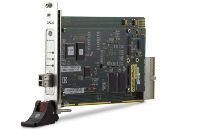











评论